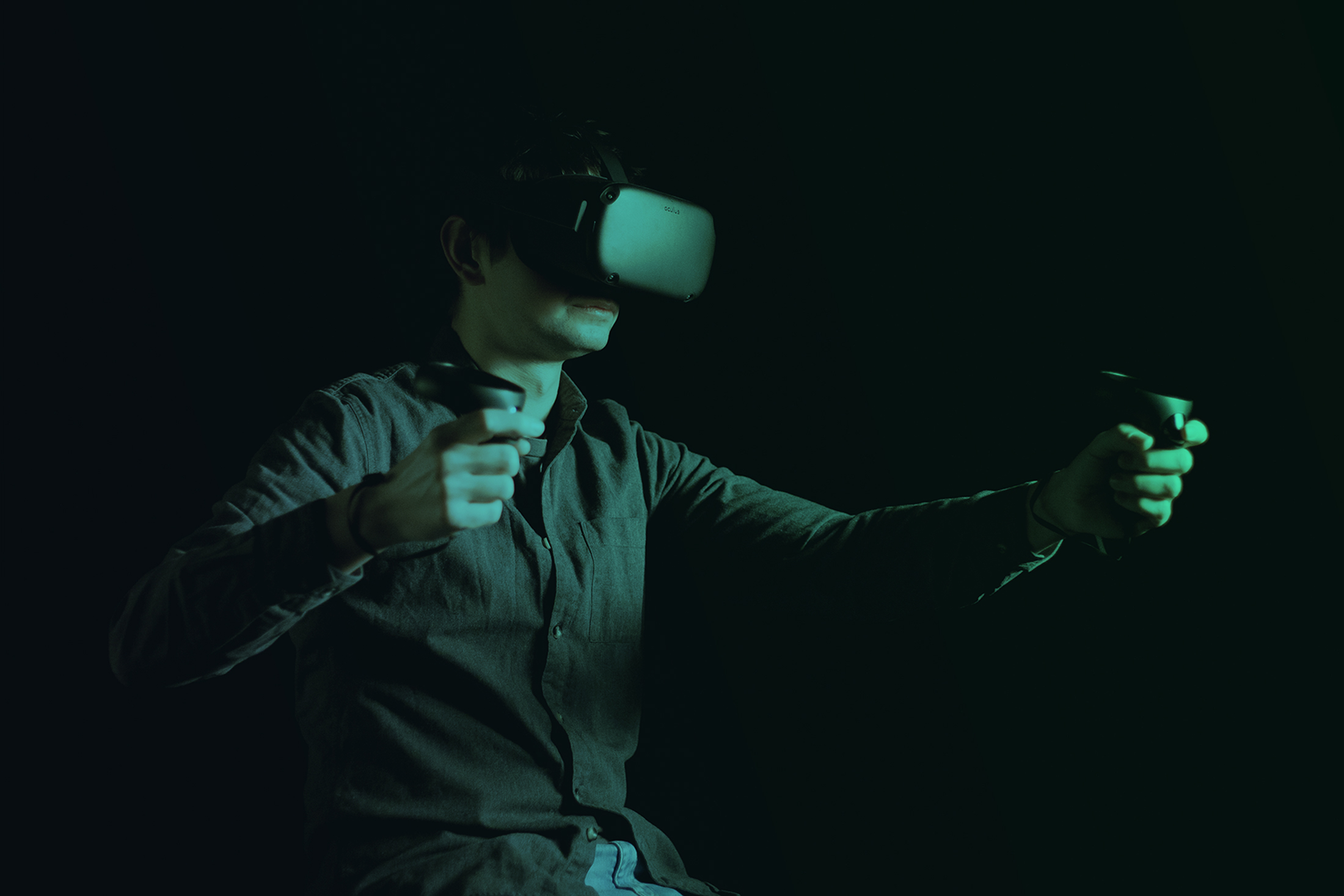Publications
The library contains publications providing information on recent and emerging virtual reality technologies and their application in rehabilitation. Details can be found on authors, research, technology, area of impact as well as location.
VR4REHAB is providing this library as a service for all stakeholders in rehabilitation to showcase past, current and future work with neither assessment of quality of content nor evaluation of claims made by the original authors. Therefore, reference to any work or products in the library does not constitute an endorsement or recommendation by VR4REHAB.
"We explored whether the Virtual Integration Environment (VIE), a virtual reality UE simulator, could be used as a therapy device to effectively treat PLP in individuals with UE amputation."
"This paper surveys current research trends, findings and limitation of VR and AR in its effect on human performance, specifically in Singapore, and our experience in the National University of Singapore (NUS)."
"This study aimed to conceptualize wearable technology embodiment, create an instrument to measure it, and test the predictive validity of the scale using well-known constructs related to technology adoption."
"We evaluated the effects of a mixed reality (MR) head-mounted device on some cognitive and physiological functions during 90 min tasks in an attempt to determine their safety for workers."
"Our study provides researchers and designers with informative guidelines to develop more natural gesture control systems or immersive user interfaces with haptic feedback."
"This case report describes walking function and mediolateral stability outcomes of an individual with a unilateral transfemoral amputation following a novel perturbation-based gait training intervention in a virtual environment."
"Effects of different visual displays on the time and precision of bare-handed or tool-mediated eye-hand coordination were investigated in a pick-and-place-task with complete novices."
"This pilot study investigated the effect of an interactive motor adaptation balance training program based on wearable sensors for improving balance in older cancer patients with CIPN."
"Our aim was to determine if there was decreased spasticity in the ankle plantar flex (PF) muscles in the plegic lower extremity (LE) and improvement of gait function in stroke patients after traditional rehabilitation (TR) in combination with virtual reality with reinforced feedback, which is termed “reinforced feedback virtual environment” (RFVE)."
"The purpose of this study was to investigate whether providing augmented feedback during powered wheelchair simulator training results in superior performance, and whether skills learned in a virtual environment transfer to real PW driving."
"Video gaming as a therapeutic tool has largely been studied within the stroke population with some benefits reported in upper limb motor performance, balance, coordination, and cardiovascular status. To date, muscle activation of upper limb muscles in persons with spinal cord injuries (SCI) has not been studied during video game play."
"Executive functions are crucial for performance of everyday activities. In Multiple Sclerosis (MS), executive dysfunctions can be apparent from the early onset of the disease. Technology-based time-efficient and resource-saving tools for early evaluation of executive functions using an ecological approach are needed to assess functional performance in real-life."
"Behavioral inhibition (BI), a tendency to withdraw from or avoid novel social and non-social situations, is a personality trait which can confer risk for anxiety disorders. However, questionnaires have inherent limitations, particularly in psychiatric populations where there may be unawareness of deficit. A viable alternative may be virtual environments, in which the participant guides an on-screen “avatar” through a series of onscreen events meant to simulate real-world situations.."
"Diminished sensory adaptation has been associated with poor balance control for children with fetal alcohol spectrum disorders (FASD). A virtual reality system, Sensorimotor Training to Affect Balance, Engagement and Learning (STABEL), was developed to train sensory control for balance."
"Quantitative evaluation of gait has been considered a useful tool with which to identify subtle signs of motor system peculiarities in autism spectrum disorder (ASD). However, there is a paucity of studies reporting gait data in ASD as well as investigating learning processes of locomotor activity. Novel advanced technologies that couple treadmills with virtual reality environments and motion capture systems allows the evaluation of gait patterns on multiple steps and the effects of induced gait perturbations, as well as the ability to manipulate visual and proprioceptive feedbacks."
"This study investigates spatiotemporal gait adjustments that occur while stepping over virtual obstacles during treadmill walking in people with/without diabetic peripheral neuropathy (DPN)."
"Our central hypothesis was that provocative sensorimotor perturbations, delivered in a highly instrumented, immersive virtual environment, would challenge sensory subsystems recruited for balance through conflicting multi-sensory evidence, and therefore reveal that not all subsystems are performing optimally."
"Trauma triage depends on fallible human judgment. We created two “serious” video game training interventions to improve that judgment. The interventions’ central theoretical construct was the representativeness heuristic, which, in trauma triage, would mean judging the severity of an injury by how well it captures (or “represents”) the key features of archetypes of cases requiring transfer to a trauma center."
